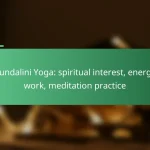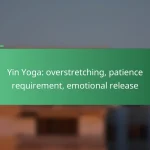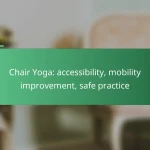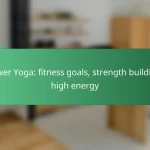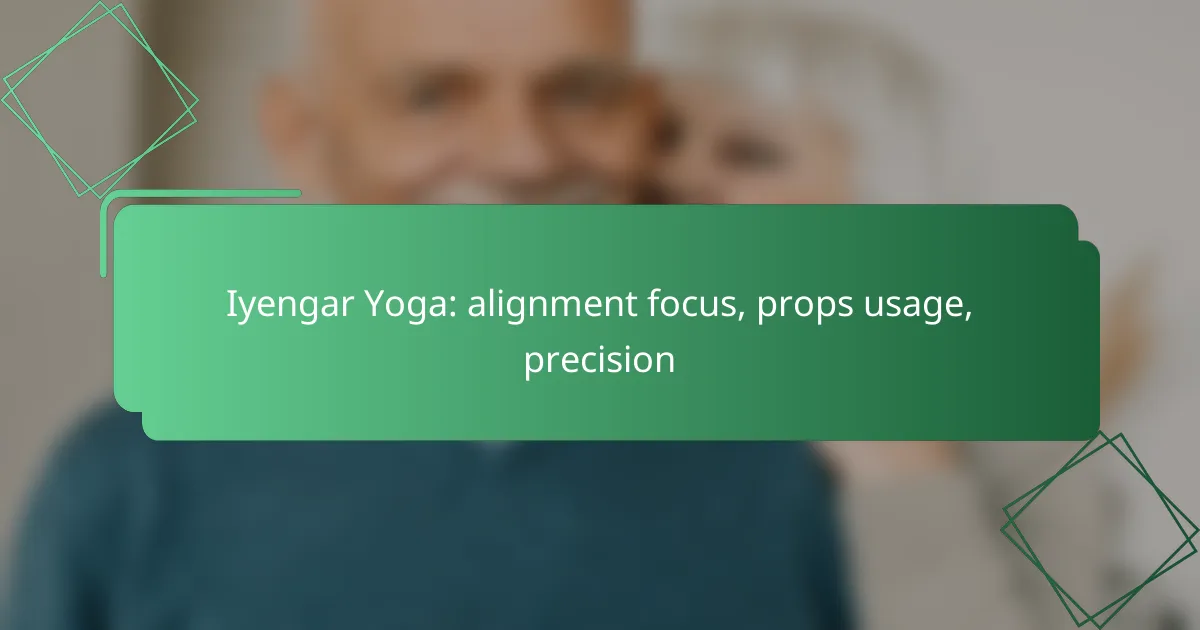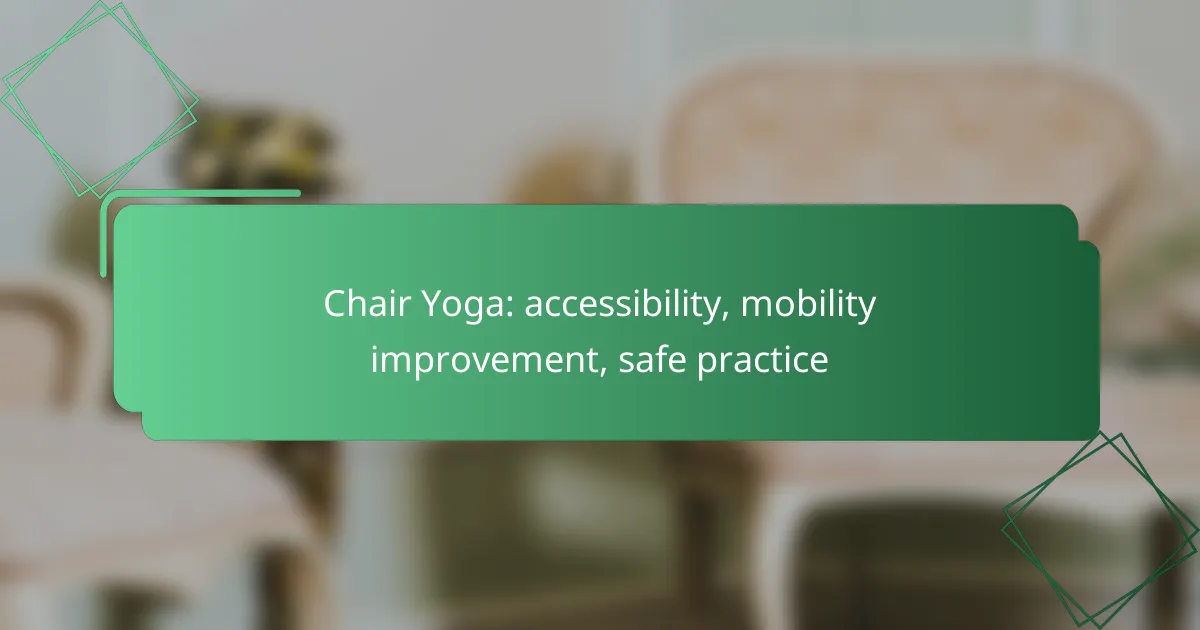Iyengar Yoga is a practice that prioritizes precise alignment in postures, enhancing physical stability and overall health. By incorporating props such as blocks, straps, and blankets, practitioners can achieve correct positioning and deepen their understanding of each pose. This emphasis on precision not only supports effective practice but also fosters a greater awareness of the body’s capabilities.
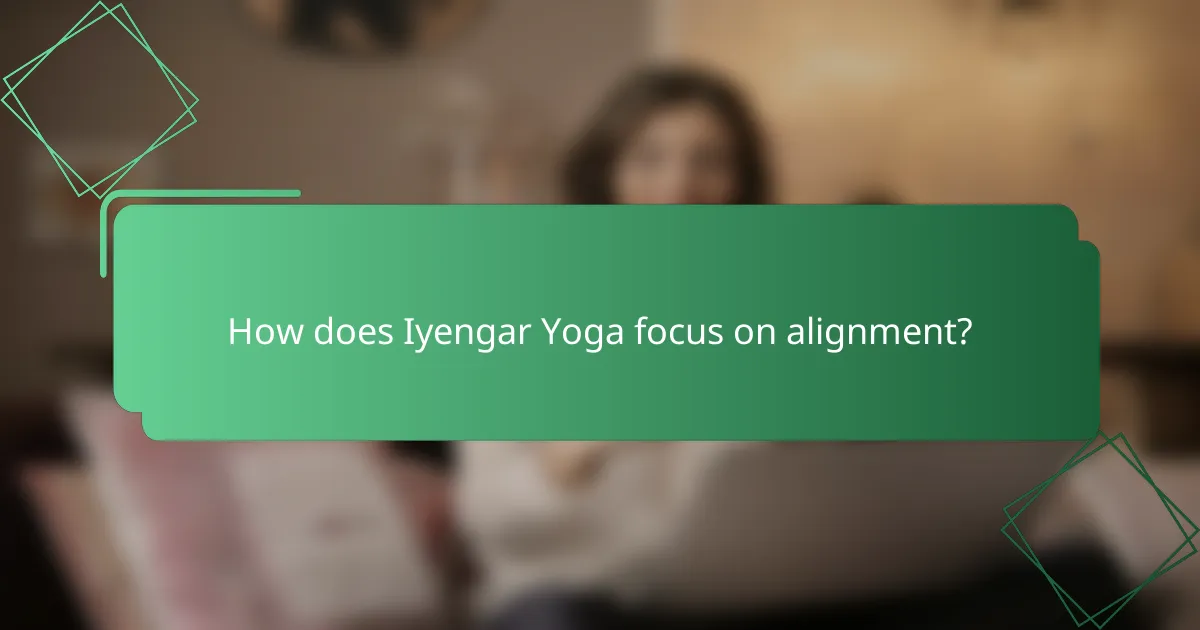
How does Iyengar Yoga focus on alignment?
Iyengar Yoga emphasizes precise alignment in postures to enhance physical stability and promote optimal health. This approach involves using props and detailed instructions to ensure practitioners achieve correct positioning, which can lead to deeper understanding and improved performance in each pose.
Principles of alignment in Iyengar Yoga
The core principle of alignment in Iyengar Yoga is to maintain the integrity of the body while performing asanas. This involves aligning the bones and muscles in a way that supports balance and reduces the risk of injury. Practitioners are encouraged to engage specific muscle groups to stabilize their poses, ensuring that each movement is intentional and controlled.
Another key aspect is the use of props, such as blocks, straps, and blankets, which help individuals achieve proper alignment regardless of their flexibility or strength levels. These tools allow for modifications that cater to individual needs, making the practice accessible to everyone.
Benefits of alignment-focused practice
Practicing with a focus on alignment can lead to numerous benefits, including improved posture, increased flexibility, and enhanced strength. By aligning the body correctly, practitioners can experience greater ease in their movements, which can translate into everyday activities.
Additionally, a strong emphasis on alignment can help prevent injuries, as it teaches awareness of body mechanics. This awareness can foster a deeper mind-body connection, promoting mental clarity and emotional balance during practice.
Common alignment techniques
Common alignment techniques in Iyengar Yoga include the use of external cues, such as visual markers or physical adjustments from instructors. For instance, practitioners might be guided to align their knees over their ankles in standing poses to ensure stability.
Another technique involves the use of props to support the body in achieving the correct alignment. For example, a block can be placed under the hand in a triangle pose to help maintain proper alignment of the shoulder and hip. Regularly checking in with the body and making adjustments as needed is crucial for effective practice.

What props are used in Iyengar Yoga?
Iyengar Yoga utilizes a variety of props to enhance alignment, support, and precision in poses. Common props include blocks, straps, blankets, and bolsters, each serving specific purposes to facilitate practice for all levels.
Types of props in Iyengar Yoga
The main types of props in Iyengar Yoga are blocks, straps, blankets, bolsters, and chairs. Blocks provide elevation and stability, while straps assist in extending reach and improving flexibility. Blankets offer cushioning and warmth, bolsters support the body in restorative poses, and chairs can help with balance and accessibility.
Each prop is designed to help practitioners achieve optimal alignment and comfort, making poses more accessible regardless of skill level. For example, using blocks under the hands in a forward bend can prevent strain and promote proper form.
Benefits of using props
Using props in Iyengar Yoga enhances safety and effectiveness in practice. They allow for deeper stretches and help maintain proper alignment, reducing the risk of injury. Props also enable practitioners to hold poses longer, facilitating greater awareness and connection to the body.
Additionally, props can make challenging poses more approachable for beginners or those with physical limitations. For instance, a strap can help someone who struggles with flexibility to perform a pose without compromising form.
How to choose the right props
Choosing the right props depends on individual needs and the specific poses being practiced. Beginners may benefit from basic props like blocks and straps, while more advanced practitioners might explore additional options like bolsters and chairs for deeper support.
Consider your body type, flexibility, and any physical limitations when selecting props. A good rule of thumb is to start with a few essential items and gradually incorporate more as your practice evolves. Always ensure that props are stable and supportive to enhance your experience safely.
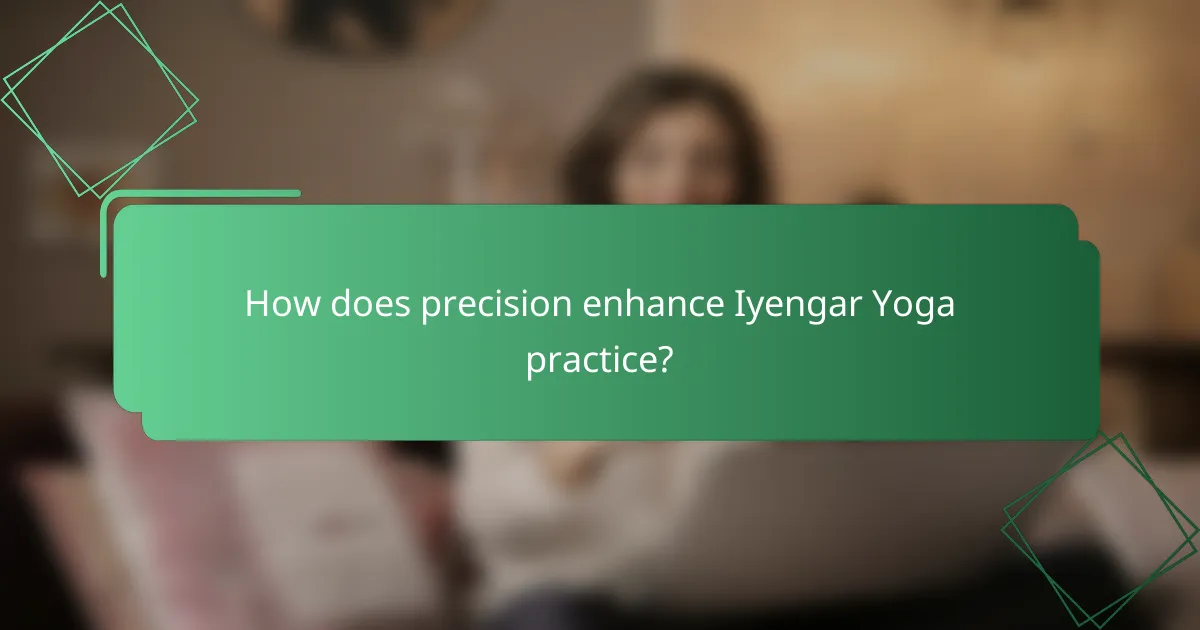
How does precision enhance Iyengar Yoga practice?
Precision in Iyengar Yoga practice is crucial as it ensures correct alignment and effective use of props, leading to deeper engagement in poses. This focus on exactness helps practitioners gain a clearer understanding of their bodies and enhances the overall effectiveness of their practice.
Importance of precision in poses
Precision in poses allows practitioners to achieve optimal alignment, which is essential for both safety and effectiveness. Each pose has specific alignment cues that, when followed, can enhance the benefits of the asana and support overall body mechanics.
For example, in poses like Trikonasana (Triangle Pose), precise foot placement and torso alignment can significantly impact balance and stability. Practicing with precision helps in developing strength and flexibility while minimizing the risk of strain.
Techniques for achieving precision
To achieve precision in Iyengar Yoga, practitioners should focus on using props such as blocks, straps, and blankets. These tools can help modify poses to suit individual body types and abilities, allowing for better alignment and deeper stretches.
Additionally, regular self-assessment and feedback from instructors can enhance precision. Practitioners should pay attention to their body’s sensations and make adjustments as needed, ensuring that they are not forcing themselves into a position that could lead to discomfort or injury.
Impact of precision on injury prevention
Precision plays a significant role in injury prevention in Iyengar Yoga by promoting safe alignment and reducing the likelihood of strain. When poses are practiced with attention to detail, the risk of overextending or misaligning joints is minimized.
For instance, maintaining proper alignment in poses like Adho Mukha Svanasana (Downward-Facing Dog) can prevent wrist and shoulder injuries. Practitioners should be mindful of their limits and use props to support their practice, ensuring they do not push beyond their capabilities.

Where can I find Iyengar Yoga classes in major cities?
To find Iyengar Yoga classes in major cities, look for dedicated studios or community centers that specialize in this style. Many urban areas have a variety of options, including certified instructors and well-equipped facilities.
Top Iyengar Yoga studios in New York
New York City boasts several prominent Iyengar Yoga studios. The Iyengar Yoga Institute of New York is one of the most recognized, offering a range of classes for all levels. Another notable option is Abhyasa Yoga Center, known for its experienced instructors and supportive environment.
When choosing a studio, consider the class schedule, instructor qualifications, and the availability of props, which are essential for Iyengar practice. Many studios also offer introductory packages, making it easier to explore different classes.
Recommended instructors in Los Angeles
In Los Angeles, look for certified Iyengar instructors such as Patricia Walden and Manouso Manos, both of whom have extensive experience and a strong following. Their classes emphasize alignment and the use of props to enhance practice.
When selecting an instructor, check their credentials and teaching style to ensure they align with your learning preferences. Many instructors offer workshops or private sessions, which can provide more personalized guidance.
Online Iyengar Yoga class options
For those unable to attend in-person classes, numerous online platforms offer Iyengar Yoga sessions. Websites like Yoga International and Glo provide access to a variety of classes led by certified instructors, allowing you to practice at home.
When choosing an online class, look for options that include detailed instruction on alignment and prop usage. Many platforms offer free trials, so you can test different classes before committing to a subscription.
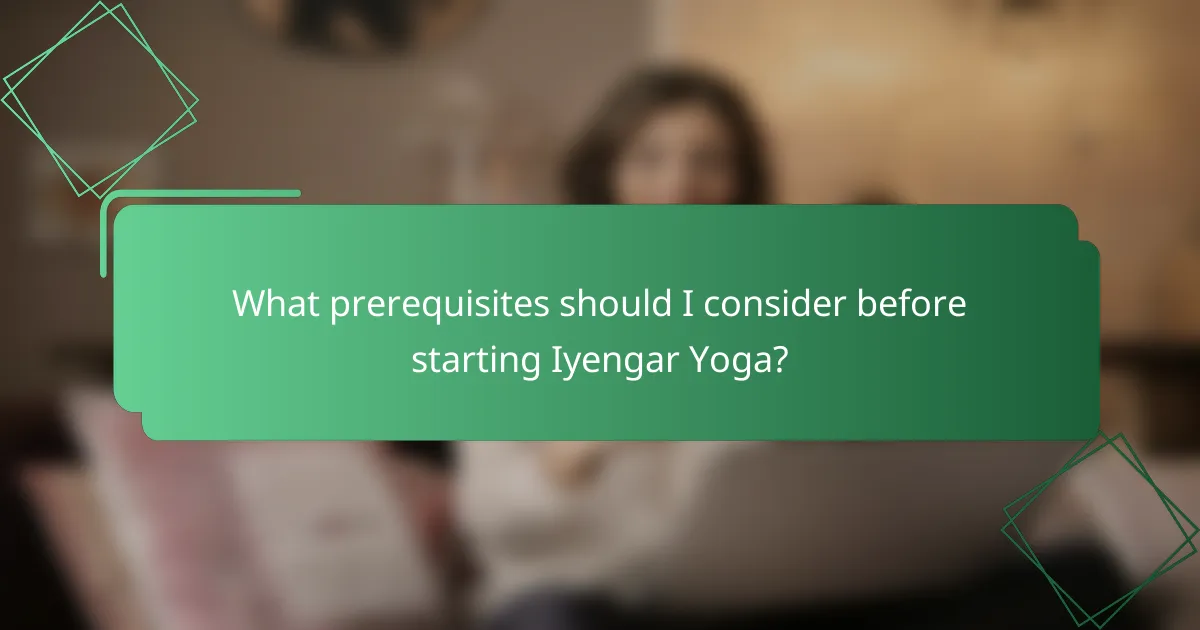
What prerequisites should I consider before starting Iyengar Yoga?
Before starting Iyengar Yoga, consider your physical fitness, mental readiness, and any previous yoga experience. These factors will help you determine if you are prepared for the specific demands of this practice, which emphasizes alignment and the use of props.
Physical fitness requirements
While Iyengar Yoga is accessible to various fitness levels, a basic level of physical fitness is beneficial. You should be able to perform simple movements and hold poses for several breaths without discomfort. If you have any pre-existing health conditions, consult a healthcare professional before beginning.
Common physical considerations include flexibility, strength, and balance. Beginners might find it helpful to focus on improving these areas gradually, as Iyengar Yoga often involves holding poses for extended periods, which can challenge your endurance.
Mental readiness for practice
Mental readiness is crucial for engaging fully in Iyengar Yoga. This practice requires concentration and patience, as it emphasizes precision and alignment in each pose. Be prepared to cultivate mindfulness and focus during your sessions.
Approach your practice with an open mind and a willingness to learn. Iyengar Yoga can be challenging, and maintaining a positive attitude will help you navigate the complexities of the poses and techniques.
Previous yoga experience
Having some prior yoga experience can be advantageous, but it is not strictly necessary. If you have practiced other styles of yoga, you may find it easier to grasp the principles of alignment and the use of props in Iyengar Yoga.
For complete beginners, consider attending a few introductory classes to familiarize yourself with basic poses and terminology. This foundation will enhance your understanding and help you feel more comfortable as you progress in Iyengar Yoga.
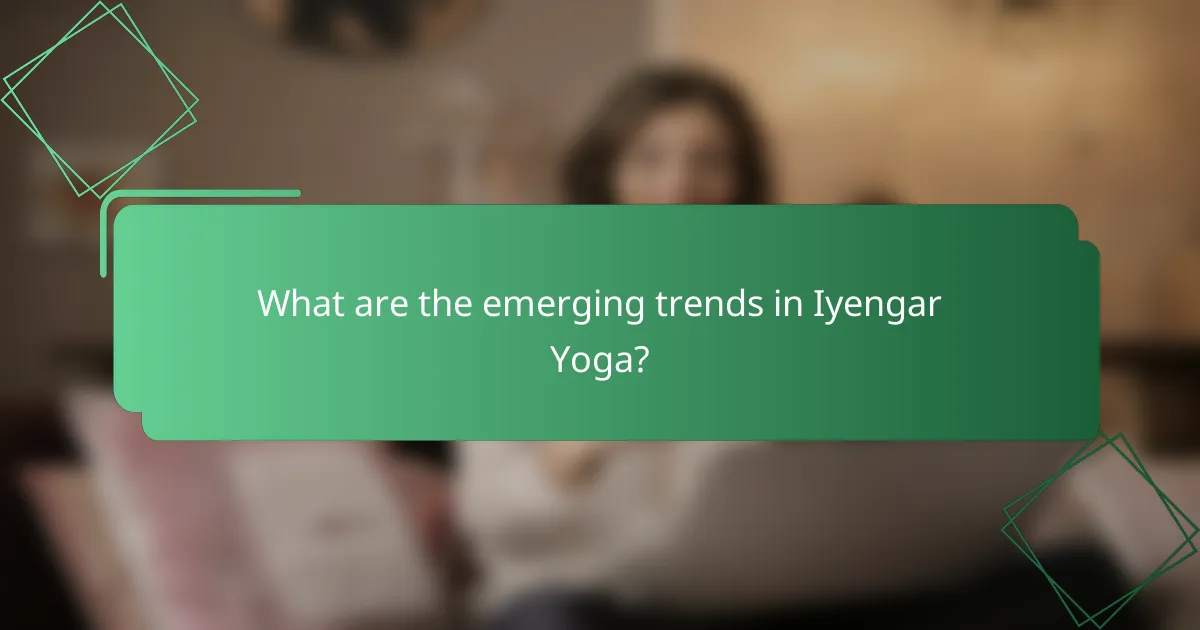
What are the emerging trends in Iyengar Yoga?
Emerging trends in Iyengar Yoga focus on integrating technology, enhancing mental health benefits, and fostering community engagement. These trends reflect a shift towards making yoga more accessible and relevant in today’s fast-paced world.
Integration of technology in practice
The integration of technology in Iyengar Yoga includes the use of apps, online classes, and virtual workshops. These tools allow practitioners to access guidance from certified instructors regardless of their location, making it easier to maintain a consistent practice.
Many studios now offer live-streamed classes and recorded sessions, enabling students to practice at their convenience. This flexibility can help individuals fit yoga into their busy schedules, promoting regular engagement.
Focus on mental health benefits
There is a growing emphasis on the mental health benefits of Iyengar Yoga, particularly in reducing stress and anxiety. Practitioners are increasingly recognizing how alignment and precision in poses can lead to improved mindfulness and emotional well-being.
Research suggests that regular practice can enhance mood and cognitive function, making it a valuable tool for mental health management. Instructors often incorporate breathing techniques and meditation to further support mental clarity and relaxation.
Community and online engagement trends
Community engagement in Iyengar Yoga is evolving with the rise of social media and online platforms. Practitioners are connecting through virtual forums, sharing experiences, and supporting one another in their journeys.
Many studios are creating online communities where members can participate in discussions, share tips, and attend virtual events. This sense of belonging can enhance motivation and commitment to practice, especially for those who may feel isolated.

